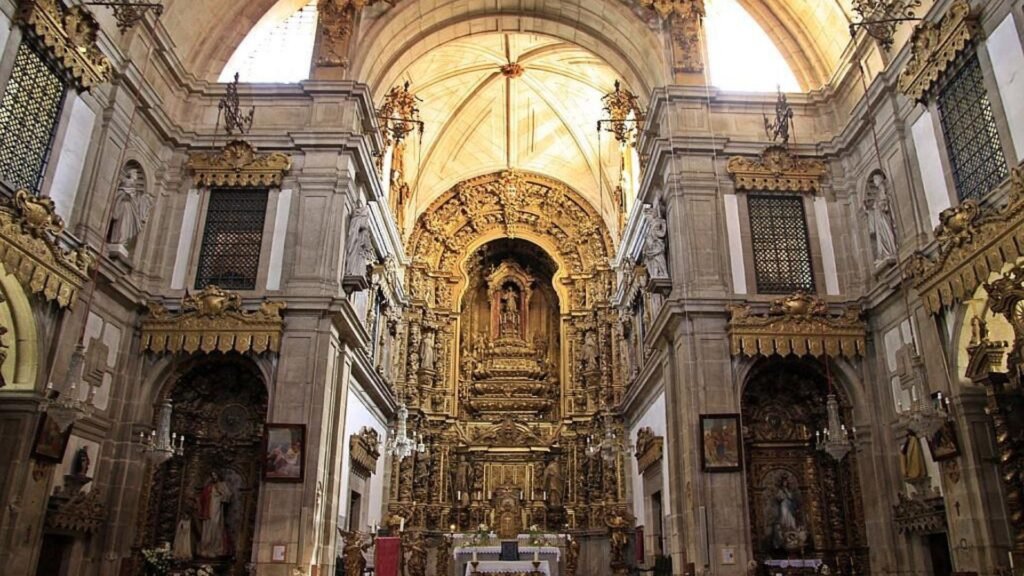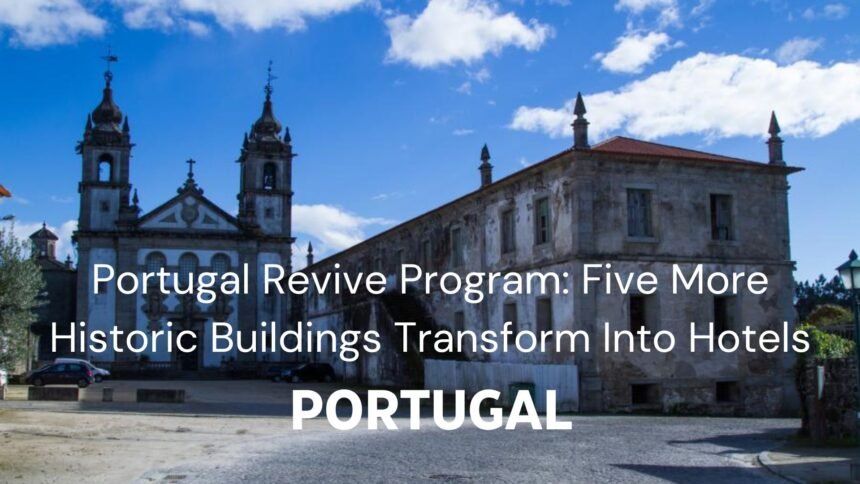Portugal Revive program continues to save historic buildings by turning them into hotels. The government has added five more properties to the program. This move will help preserve these buildings while boosting tourism and creating jobs.
Read More About: Covas Do Barroso Local Resists To Europe Lithium Mining
Portugal Revive Program

The five buildings chosen for conversion are:
- The Old Hospital of Ribeira Grande in the Azores
- The Police Headquarters in Almeida
- The Educational Center of Vila Fernando in Elvas
- The Pombalino Building of Rua da Prata in Lisbon
- The Convent of São José in Évora.
Each property has its own history and cultural value. These buildings have been unused for years but will soon serve as hotels. The program has granted 24 properties for private investment since 2016. These projects represent 190 million euros in total investments and bring in three million euros yearly for the state.
Reviving Portugal’s Heritage
The Revive program in Portugal was created to protect and reuse Portugal’s historic buildings. Many of these buildings were abandoned and falling apart. The program partners with private investors to restore and use these sites as tourist destinations.
The government holds public tenders to ensure fairness. Investors must keep the historic features of the buildings while adapting them for modern use. This balance of old and new has become the program’s trademark.
Success Stories And Current Projects
The program has had successes despite some challenges. Three hotels are already open: Vila Galé Collection Elvas, a former military barracks in the Alentejo region that is now a luxury hotel; Vila Galé Collection Alter Real, located in a royal stud farm and highlighting Portugal’s horse-riding traditions; and The Lince Santa Clara, a boutique hotel in Vila do Conde that has revitalized a small town.
Two more projects are close to completion: The Arouca Monastery, a historic site in northern Portugal that will soon welcome guests, and the Palacete dos Condes Dias Garcia, a grand residence in São João da Madeira that is nearly ready to open. These examples show how the program can turn old buildings into tourist attractions.
Challenges And Delays
The program has faced difficulties. Only 31 have been offered to investors out of 65 properties identified at the start. Of those, 24 contracts were signed but many projects have not started or are delayed.
Some buildings in remote areas struggle to attract investors. These places may have less tourism potential compared to cities or coastal areas. Also restoring historic buildings is often expensive and requires special skills and materials.
Economic And Cultural Impact
The Revive program has already created jobs and preserved cultural landmarks. It also boosts local economies by attracting visitors who spend on hotels, food, and activities.
The program helps spread tourism beyond big cities like Lisbon and Porto. It encourages visitors to explore less popular regions and benefits smaller towns and rural areas.
From a cultural perspective, the program protects important buildings for future generations. The program keeps its history alive and promotes sustainable tourism by giving these buildings a new purpose.
The addition of five new properties shows the government’s dedication to the Revive program. Challenges remain but the program’s successes prove its potential.
The government and private sector need to work together to address problems. Offering more incentives to investors and simplifying approval processes could help. Promoting lesser known regions and ensuring high quality restorations are also important steps.
The Revive program is about more than tourism. It shows Portugal’s commitment to preserving history while creating opportunities for the future. The five new properties which include the Old Hospital of Ribeira Grande and the Convent of São José mark another step forward.
As more projects are completed, the Revive program will shape Portugal’s tourism industry and ensure that its historic landmarks remain a vibrant part of the country’s identity.










